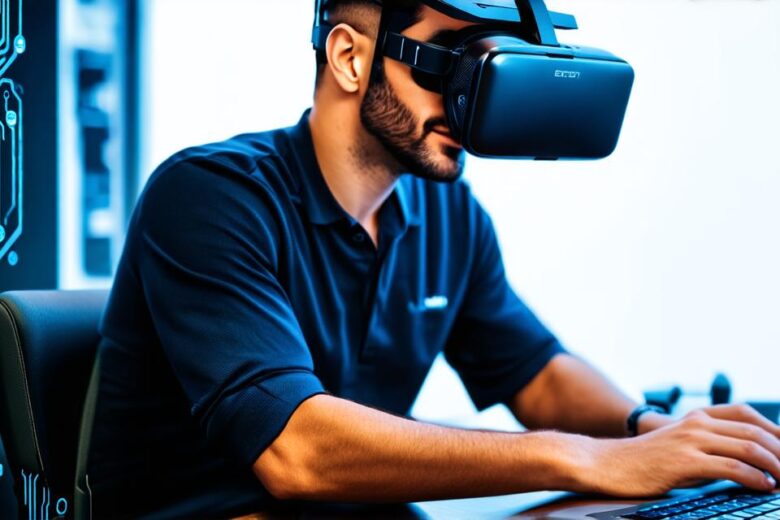Augmented reality (AR) and virtual reality (VR) are two of the most exciting technologies in the field of computer-generated imagery. Both have captured the imagination of people around the world, but they differ in important ways. In this article, we will explore the key differences between AR and VR to help you understand how they work and what they can do.
Introduction
Augmented reality (AR) and virtual reality (VR) are two of the most exciting technologies in the field of computer-generated imagery. Both have captured the imagination of people around the world, but they differ in important ways. In this article, we will explore the key differences between AR and VR to help you understand how they work and what they can do.
What is Augmented Reality?
AR is a technology that superimposes digital information onto the real world. This means that you can see objects, images, and animations in your physical environment that aren’t really there. AR works by using sensors and cameras to track the position of your device in space, then overlaying digital content on top of the real-world view captured by the camera.
What is Virtual Reality?
VR, on the other hand, creates a completely artificial environment that you can interact with as if it were real. With VR, you wear a headset that blocks out the real world and replaces it with a computer-generated simulation. The sensors in the headset track your movements and adjust the simulation accordingly, giving you the feeling of being immersed in a new reality.
Key Differences Between AR and VR
Interaction with the Real World
One of the biggest differences between AR and VR is how they interact with the real world. AR allows you to see digital content overlaid on top of your physical environment, while VR completely immerses you in a computer-generated simulation.
Accessibility
AR is generally more accessible than VR, as it doesn’t require any special equipment or setup. Most smartphones and tablets have built-in cameras and sensors that can be used to create AR experiences. VR, on the other hand, requires a specialized headset and a powerful computer to generate the simulation.
Cost
VR is generally more expensive than AR, as it requires more sophisticated hardware and software. AR experiences can be created using existing smartphones and tablets, while VR experiences require specialized equipment that can cost thousands of dollars.
Use Cases
AR and VR have different use cases depending on the application. AR is best suited for applications that require real-world interaction, such as design and architecture, or training and education. VR is best suited for applications that require complete immersion in a simulated environment, such as gaming or entertainment.
Summary

In conclusion, augmented reality and virtual reality are two distinct technologies that offer different experiences to users. While AR allows you to interact with the real world while seeing digital content overlaid on top of it, VR completely immerses you in a computer-generated simulation. Both technologies have their own unique use cases and can be used for a variety of applications depending on the needs of the user.
